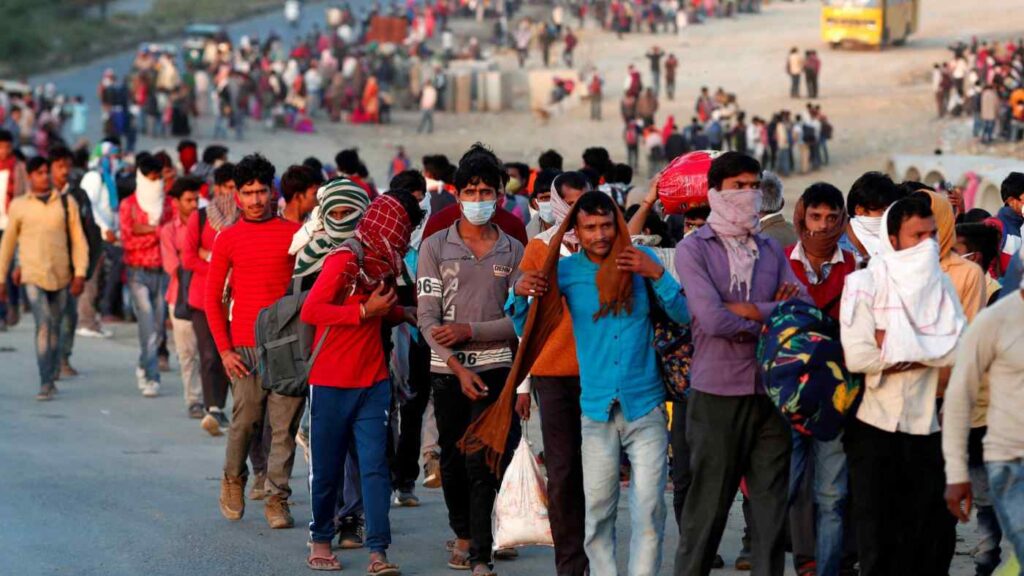The government, it seems, has created a miasma of confusion over every data point that can allow to ascertain exactly what the state of the Indian economy is.
By Sanjay Kapoor
There are numerous critical numbers that do not, yet, have an official imprimatur and hence are conveniently dismissed by the government as unreliable and even fake. What about the GDP numbers? The government has been claiming that India is one of the fastest growing economies in the world. All this chest-thumping does not square with how the health of the economy is perceived by the likes of former Chief Economic Advisor of the government of India, Kaushik Basu, who thinks otherwise. In a tweet that incurred the wrath of many of the noisy ruling party supporters, Basu said: “over 2020-22 India’s annual GDP growth is .43 percent. This places India in the middle of the global growth table.”
The big question is: does fudging figures and hiding truth help in elections and the economy? And also for how long?
Basu’s assertion punctured the claims of everyone in the government that insisted that we were one of the rapidly advancing economies of the world. What is really distressing is that the government did precious little to make such important facts indubitable – facts that cannot be questioned from within or from an economist based abroad.
Deliberately, it seems, the government has created a miasma of confusion over every data point that can allow researchers, writers or detractors to ascertain exactly what the state of the Indian economy is. There is no data that can pass off without kicking off unnecessary controversy. It never used to happen in the days of the Congress. India was a proud nation that kept its books clean and was known to be a master at smartly maintaining its key statistics.
Now no one knows exactly how many people are employed or lost their jobs due to slowdown of the economy or due to 2 years of pandemic induced unemployment. All through 2020, when migrants were walking back to their far-flung villages from Mumbai, Delhi and other cities, there was largescale obfuscation of how many returned home safely or how many lost their lives in their perilous journey. As no authoritative figures emanated from the government, the critique of the administration on how the pandemic was handled remained based on anecdotal evidence. Expectedly, there was a BBC expose` on how the decision to impose a claustrophobic lockdown on 1.4 billion people – majority of them daily wagers – was taken by the Prime Minister’s office without consulting anyone of any significance. So tragic was the outcome of the lockdown, which found many of the migrants in the throes of severe poverty and hunger, that leaders of countries like Nepal and Pakistan had to assure their citizens that they would not repeat Indian lockdown. Understandably, these countries suffered less from the pandemic or its dreadful state interventions.
Even on the issue of deaths due to pandemic, the government has been coy in owning up how many died. It has hung on to a figure of 4.8 lakh deaths, which is 1/10 of what World Health Organisation (WHO) claimed. Government agencies are denying this estimates due to WHO’s methodology, but they seem loathe to update their own numbers. Independent experts believe that there may be about 6 million deaths due to the virus in the country. What’s is also not known is the adverse impact of the vaccines. While vaccine makers were firewalled from any criminal charge, there is plenty of anecdotal evidence here, which squares with the well documented loss of lives in the Western world due to the vaccine. More recently, Mumbai High Court has admitted a petition from a father who lost his daughter, who was doctor, allegedly due to the vaccine. The father of the deceased blamed the Serum Institute of India (SII) and Bill Gates for his daughter’s death. There were thousands of similar cases, but the government was giving primacy to meeting vaccination targets rather than how ordinary people react to the inoculation. The worrying truth is that the vaccines did not really get enough time to be tested on human beings and they were rushed through to fight the pandemic. No one is asking the question: did those areas in Africa, Latin America or Asia that did not get vaccinated fare worse than those that did? For instance, Israel that has allowed 4 or 5 vaccine shots perform better – in terms of deaths due to virus – than those that did not get or take any? The government should have illuminated our masses rather than blindly agreeing to the findings of the legacy countries – US and the West.
By the look of it, the government sailed out of these crises rather safely. Despite the dodgy figures of migrants returning home or people dying due to Covid, the government continues to smell of roses as a country that fought the dreadful disease competently.
The credit for the success of the government should not go to how many people were vaccinated, but to how many people got free food once the country came under the sway of pandemic. By government estimates 800 million got food grains every month after April 2020. Since then the government has spent $ 18 billion every year, which adds up to $ 42 billion till now. The programme is scheduled to end on September 30. If that happens then the price of food grain in the market zooms to astronomical level.
According to media reports, the Expenditure department of Finance Ministry is against any extension of the free food grain programme as it would strain the budget. This decision would not be taken by economists, but by ruling party politicians who would recall the tremendous benefit free food gave them during the crucial Uttar Pradesh assembly elections. For them, the impact on fiscal deficit would be seen as a minor distraction when the free food is getting people to vote with their hands and their feet. Be that as it may, if the government continues this free food programme under PMGKAY, then it would have serious consequences on inflation. Worse the government would not adopt the monetary route to control the spiraling food inflation as it would dampen the economy.
The other bigger worry that the government is averse to making noise about is the stoppage of LNG to Gas Authority of India (GAIL) after German government took over after Gazprom Germania under temporary management, thus disrupting a long term deal between the two companies. Media reports suggest that GAIL is buying LNG at double the price at $40 mBtu. GAIL which has an impossible target of 2.85 million tons to buy from the open market, which could pauperise the company and cause strain on the budget. The company supplies 52 percent of the gas to fertilzer and power companies. What it means is that the impact of the Ukraine war from which India has been cushioned for some time, would be felt with all its intensity. The likely scenario that could unfold is high power prices, strained food grain supplies and general restiveness that would come from spiraling inflation. Can obfuscation of data help in tiding over the looming crisis?
Sanjay Kapoor is the editor of the Delhi-based Hardnews magazine and general secretary of the Editors Guild of India.


